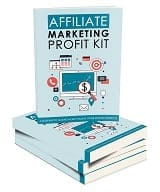
What is Content Marketing Frameworks: and How to Build a Strategy That Attracts Customers, Grows Traffic, and Scales Your Business (Without Wasting Time or Money)
Let’s cut through the noise.
Most businesses are drowning in “content advice” that sounds good but doesn’t move the needle. You don’t need more random blog posts, podcasts, or videos. You need a framework—a repeatable system that turns your content into customers.
That’s exactly what we’re diving into today.
The Lazy Blogger’s Million-Dollar Method Blueprint
What Are Content Marketing Frameworks?
A content marketing framework is simply a blueprint. It’s the system that tells you:
- What content to create
- Who it’s for
- Where to publish it
- How it drives leads and sales
Think of it as the difference between throwing darts in the dark vs. playing with the lights on and the target right in front of you.
Key Components of a Content Marketing Framework
- Clear objectives (what you want the content to do)
- Defined audience (who you’re speaking to)
- Content formats (blogs, videos, emails, etc.)
- Distribution plan (how people actually see it)
- Measurement system (so you know what’s working)
Core Elements of an Effective Content Marketing Framework
Setting SMART Goals and Marketing Objectives
“Get more traffic” is not a goal. “Increase qualified leads by 25% in 90 days” is. SMART goals give your content purpose and keep you accountable.
Defining Buyer Personas and Audience Research
If you don’t know who you’re talking to, your content will fall flat. Buyer personas help you speak directly to your ideal customer’s needs, fears, and desires.
Mapping the Customer Journey
Your audience doesn’t buy instantly. They go through stages: awareness → consideration → decision. Your framework needs content for each stage.
Implementing Content Marketing Frameworks in Practice
Content Creation and Formats
Pick formats your audience actually consumes. Blogs, short-form videos, podcasts, or even simple email newsletters. Don’t try to be everywhere—be where it matters.
Distribution and Promotion Channels
“Build it and they will come” is a lie. Use email, social media, SEO, and paid ads to push your content in front of the right people.
Lead Generation and Conversion Tactics
Content without a call-to-action is just entertainment. Use lead magnets, opt-ins, and clear next steps to turn attention into leads and sales.
Measuring and Optimizing Your Content Marketing Framework
Engagement Metrics and ROI
Track what matters: leads, conversions, revenue. Vanity metrics (likes, shares) are nice—but they don’t pay the bills.
Tools for Tracking and Improvement
Use tools like Google Analytics, HubSpot, or even simple dashboards to measure results. Then double down on what works, cut what doesn’t.
These structured approaches help you align your content strategy with your business goals, making your marketing efforts more effective and streamlined.
Get the latest
The Lazy Blogger’s Million-Dollar Method Blueprint
What Are Content Marketing Frameworks?
When you think about content marketing frameworks, picture them as blueprints for your strategy. These frameworks help structure your content efforts, ensuring they’re aligned with your business goals. Knowing the key components, types, and benefits will help you create a more effective content strategy.
Key Components of a Content Marketing Framework
A solid content marketing framework consists of several vital components.
- Goals: Define what you want to achieve, whether it’s increasing brand awareness, driving traffic, or generating leads.
- Target Audience: Know who you’re creating content for. Understanding their needs and preferences is crucial.
- Content Types: Decide on the formats that fit your audience best, such as blogs, videos, and infographics.
- Distribution Channels: Identify where you will share your content. Options include social media, email newsletters, and websites.
- Measurement and Analytics: Establish KPIs (Key Performance Indicators) to track your content’s performance.
Each part plays a crucial role in shaping your overall strategy and ensuring it’s effective.
Core Elements of an Effective Content Marketing Framework
Creating a solid content marketing framework starts with a few key components.
By focusing on setting clear goals, understanding your audience, and mapping their journey, you lay the groundwork for effective content creation.
Setting SMART Goals and Marketing Objectives
Setting SMART goals means your objectives are Specific, Measurable, Achievable, Relevant, and Time-bound. This gives you a clear roadmap for your content.
For example, you might say, “I want to increase website traffic by 20% in the next three months.” This is better than saying “I want more traffic.”
Each objective should relate directly to your overall marketing goals.
Think about what you need your content to achieve.
Do you want to boost brand awareness or generate leads?
By determining your priorities and timelines, you can track your success effectively.
Defining Buyer Personas and Audience Research
Knowing your audience is crucial.
Start by creating detailed buyer personas.
These are fictional representations of your ideal customers based on data and research.
Include details like age, gender, interests, and buying behaviors.
Conducting audience research can help you gather valuable insights. This may involve surveys, interviews, or analyzing social media engagement. The more you understand your audience’s needs and pain points, the better you can tailor your content to resonate with them. This ensures that your messages are on point and relevant.
Mapping the Customer Journey
The customer journey outlines the steps your audience takes from discovering your brand to making a purchase.
Mapping this journey helps you identify key touchpoints.
Implementing Content Marketing Frameworks in Practice
When you implement a content marketing framework, it’s all about being organized and strategic.
By focusing on content creation, distribution, and lead generation, you can ensure that your marketing efforts are effective and aligned with your goals.
Content Creation and Formats
Start by planning your content creation with a clear strategy.
When choosing content formats, consider blog posts, videos, infographics, and podcasts. Each has its strengths.
For example, blog posts can boost SEO, while videos can engage viewers emotionally.
Make sure to cover a mix that resonates with your audience.
Also, think about using engaging visuals to enhance your posts.
Infographics give complex data a simple look, making it easier for your readers to digest.
Distribution and Promotion Channels
Once you’ve created your content, it’s time for distribution.
Use a mix of organic social media and email marketing to reach your audience. Social media is great for sharing quick updates and engaging with followers, while email allows for more detailed information.
Consider using platforms like Facebook, Instagram, and LinkedIn based on where your audience spends their time.
Schedule posts consistently to keep your brand visible. You can also join relevant groups or forums to expand your reach and direct traffic to your content.
Lead Generation and Conversion Tactics
Effective lead generation is key to moving potential customers through the marketing funnel.
Use calls to action (CTAs) in your content to encourage visitors to sign up for newsletters or download guides.
These tactics can increase your conversion rates.
Offer something valuable, like free eBooks or exclusive videos, in exchange for their email. This not only warms them up to your brand but also gathers leads.
Track your conversions and adjust your strategies based on what works, ensuring that you optimize your approach over time.
Measuring and Optimizing Your Content Marketing Framework
To get the best out of your content marketing framework, you need to focus on measuring key performance indicators effectively.
This involves understanding engagement metrics, using the right tools, and having strategies for ongoing improvements.
Engagement Metrics and ROI
Engagement metrics are crucial for gauging how well your content performs.
You want to track metrics like page views, time on page, and bounce rate. These numbers show how your audience interacts with your content.
To measure ROI effectively, consider the cost per lead and conversion rates from your content.
For instance, if you publish a blog post, track how many readers turn into leads.
Using tools like SEMrush or HubSpot can simplify this process.
They offer insights on how your audience consumes content and help you adjust your strategy accordingly.
Tools for Tracking and Improvement
Having the right tools makes a big difference in your measurement efforts.
Trello is great for managing your content calendar and tracking deadlines. It helps keep your team organized and on schedule.
For deeper analytics, platforms like Google Analytics are essential.
They can show you detailed engagement statistics for each piece of content. You can also take advantage of tools like HubSpot to integrate marketing efforts and analyze data in one place.
Regular audits using these tools will help you identify areas that need improvement or fresh ideas for original research.
Look, the truth is simple.
If you don’t have a content marketing framework, you’re basically throwing spaghetti at the wall. You hope it sticks.
But when you follow a proven system, everything changes. You attract the right people. You grow your traffic. And most importantly, you scale your business without the stress and guesswork.
So here’s the deal: you already know content marketing works.
The only question is—will you keep winging it, or will you finally put a framework in place that gets results? The smart move is obvious.
Start building your ultimate strategy today, and watch how fast the right audience starts finding you.
If you’re serious about making content marketing finally work for you… then don’t just sit on this. Grab my free guide
Final Word
Content marketing doesn’t have to be complicated. With the right framework, you can attract the right people, grow your traffic, and scale your business—without wasting time or money.
The key? Stop guessing. Start following the framework.
👉 Click here to grab the Content Marketing Framework Cheat Sheet (it’s free).
It’ll show you the exact process to create content that attracts customers, builds authority, and drives sales—without burning out or wasting money.
No fluff. Just the framework.
Want to Shortcut the Process?
Quick story…
When I first started creating content, I thought the answer was “publish more.” So I cranked out blog posts, social posts, videos—you name it. And guess what?
Crickets.
It wasn’t until I built a simple framework—one that tied every piece of content to a clear goal, a specific audience, and a defined next step—that things finally clicked. Leads started coming in. Sales followed. And the best part? I wasn’t burning myself out anymore.
Here’s why I’m telling you this: you don’t need to reinvent the wheel. You just need the framework.
👉 Click here to grab the Content Marketing Framework Cheat Sheet (it’s free).
It’s the same system I wish I had when I was starting out—and it’ll save you months (maybe years) of trial and error.
Go grab it now, and start creating content that actually brings in customers.
P.S. Most people will read this, nod their head, and then go back to doing things the hard way. Don’t be that person.
The cheat sheet is free, it takes 2 minutes to read, and it could completely change the way you approach content.
Grab it now while it’s fresh on your mind.
Discover more from AngelinaM
Subscribe to get the latest posts sent to your email.

























